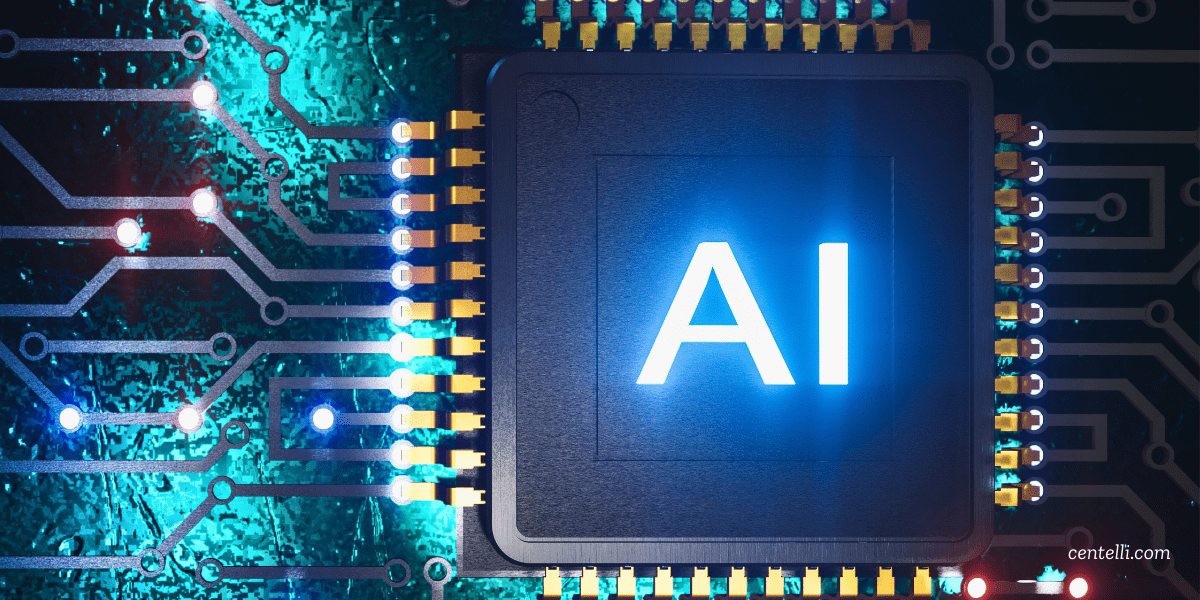
- Artificial Intelligence
- Written By Rajan Gupta
AI Impact on Business with Real Examples: Insights from Our KSU AI Symposium 2025 Session
04-Sep-2025 . 7 min read
At the recent AI symposium hosted by Kennesaw State University, our expert panel shared key insights on AI’s impact on business. We explored critical topics such as emerging paradigms, risk navigation, hybrid workforces, and more—issues at the top of mind for both solution providers and organizations looking to leverage AI.
At Centelli, we value industry–academia collaboration as a platform for sharing knowledge on the latest AI and automation developments.
For our session, I focused on AI and its interplay with automation in the rise of the agentic era, and how the maturity curve guides business impact.
My esteemed co-panelists—Dr. Ajay Aluri from West Virginia University, John Foster, CIO of Libra Industries, and Jay Indrakumar, a healthcare digital transformation executive—presented real-world case studies from hospitality, supply chain, and healthcare industries, offering an insider’s view of AI at work.
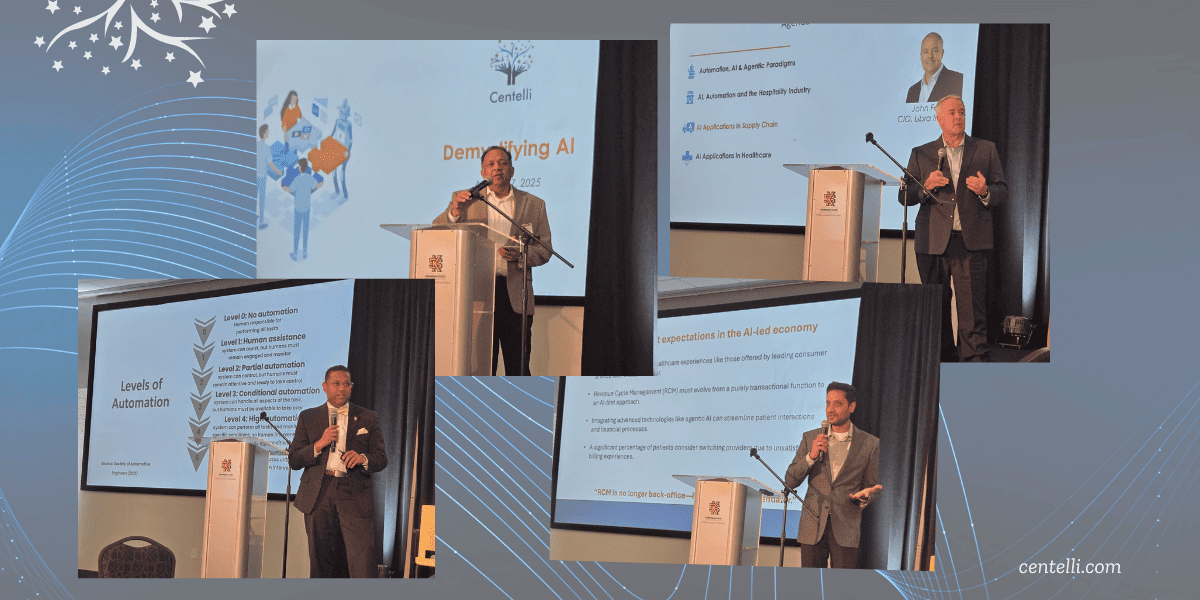
This article recaps some insightful and inspiring highlights from our session, giving a broad overview of how AI is reshaping industries and making bold strides in business transformation.
AI, Automation, and Agents: The 3 A’s Reimagining Business
The revolutionary waves of Robotic Process Automation (RPA) brought unprecedented levels of efficiency and speed to businesses. Now, the rise of Artificial Intelligence (AI) has opened new vistas of transformation and impact, driven by its cognitive capabilities.
You can liken RPA software bots to the hands—mimicking human actions on a computer—while AI can be seen as the brains, i.e., it can think, make decisions, and learn.
In that sense, AI is a true game-changer, enabling businesses to automate tasks that demand human-like intelligence at scale. Imagine the promise it holds—be it decision-making, business intelligence, cross-functional orchestration, or enterprise-wide resource optimization.
The good part is that AI can be tailored to any industry, business, or process.
[A pertinent example is CommsIQ, Centelli’s own AI-powered email triage tool for hospitality and travel, which can be customized to meet specific business requirements.]
Notably, AI is merging with automation technologies to enable intelligent automations and hyperautomations for complex, end-to-end business processes—going beyond traditional RPA.
It is also driving the next generation of advanced bots, known as Intelligent Digital Workers (virtual employees), as well as autonomous entities called “Agents.”
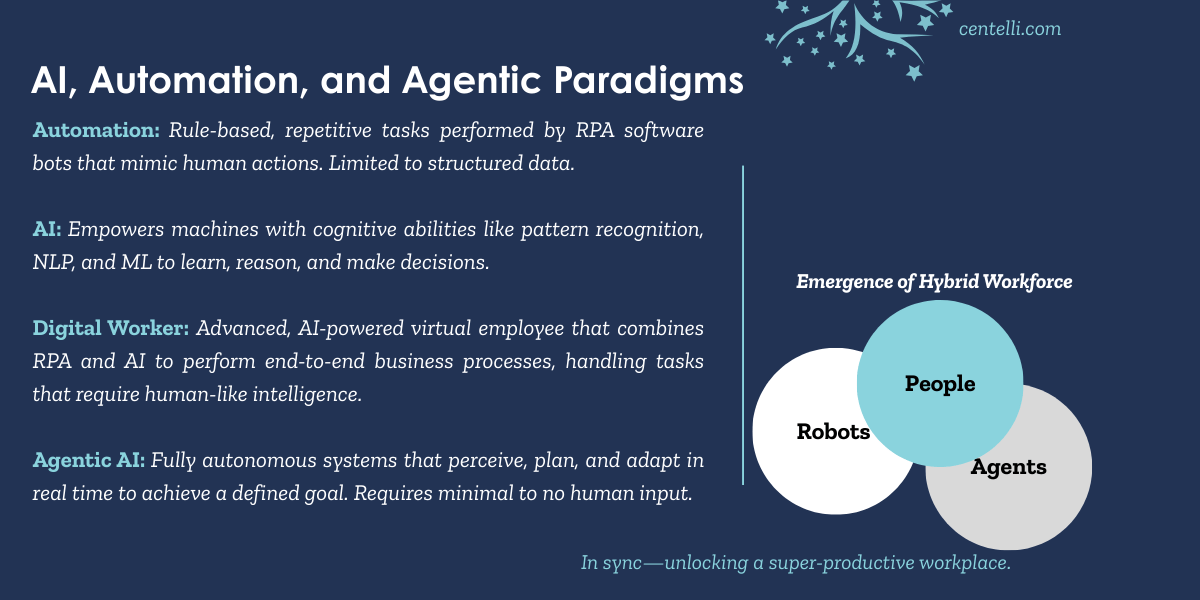
However, as we enter the ‘agentic’ and hybrid workforce era, we’ll see highly productive workplaces where agents, robots (RPA/Digital Workers), and people work together in harmony.
The operations mantra will be: ‘Agents think, Robots do, and People lead’.
And the interplay of AI and automation and its maturity curve send a clear message:
- Hybrid workforces unlock exponential value, especially in fast-changing, uncertain markets.
- Early adopters enjoy faster product launches, stronger operational resilience, and higher margins.
- AI boosts human creativity and judgment—it complements us, it doesn’t replace us.
- Human-tech collaboration drives operational excellence and sparks innovation.
Understanding AI Impact on Business with Real Case Studies
Following the deep dive into AI, Automation, and Agentic paradigms, the next leg of the session provided a closer look at how AI and automation deliver tangible value beyond theory.
Here are key insights from the presented case studies, illustrating AI impact on business:
AI and Automation in Hospitality
Combining RPA, Machine Learning, and AI, Digital Workers (special software bots) can perform tasks traditionally handled by human employees.
The first case study showcases a Digital Worker, named “Penny,” delivering scalable accounting efficiency for a leading hospitality brand managing 200+ hotels, spanning major chains and independent properties.
The Digital Worker outcomes:
- Nightly process automation handles 700 daily reconciliations effortlessly.
- Accountants are freed from repetitive data entry tasks, saving 80% of their time.
The second case study explains how a Digital Worker called “Bertie” processes guest bookings across multiple platforms, reducing pressure on contact center staff at a renowned hospitality company operating in the UK.
The Digital Worker outcomes:
- Processes 20,000 monthly transactions
- Updates the PMS with high accuracy
- Automates 50% of the reservation workload
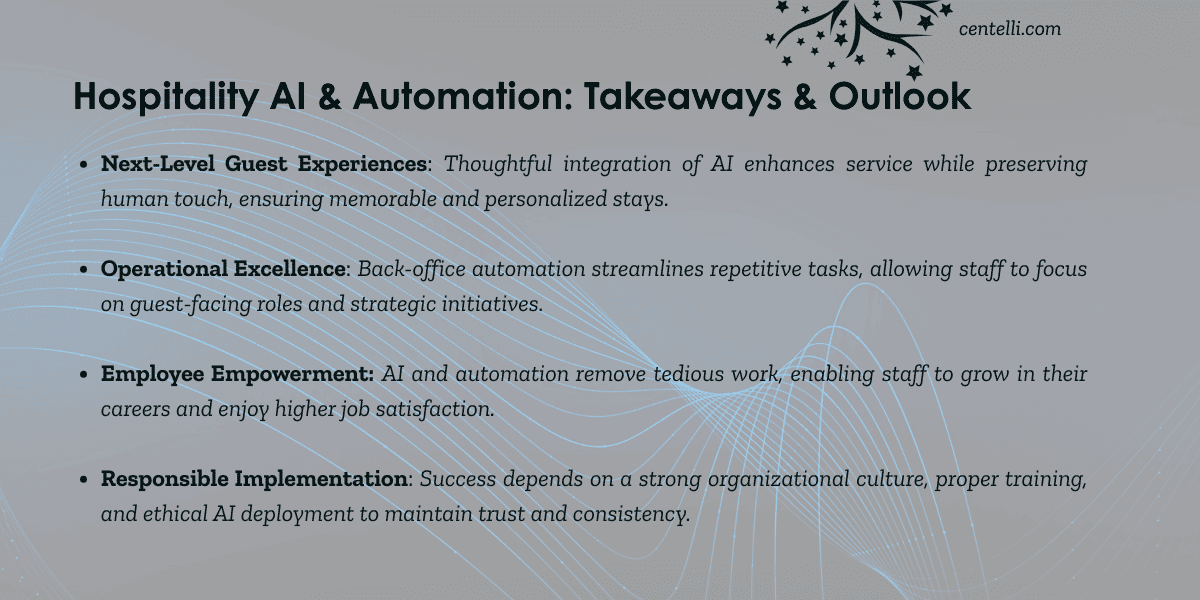
These use cases also suggest that AI-driven Digital Workers are generally non-invasive and seamlessly integrate with existing systems. Highly adaptable and capable of supporting conversational interactions, they operate 24/7, making them easy to scale and delivering faster ROI.
AI and Automation in Supply Chain
The presentation on the manufacturing and supply chain industry highlighted critical areas—beyond general functions—where AI’s predictive and real-time data capabilities can make a significant impact, such as production scheduling, delivery routing and leveling, and machine maintenance optimization.
It also emphasizes that the automation potential within Procure-to-Pay and Supply Chain processes depends on the nature of the activity.
For instance, tasks like payment and invoice processing or inventory management are highly suitable for automation, whereas procurement standards and policy development exhibit low potential.
The following supply chain automation use cases were covered:
1. Shipping Notice Generation
Before automation, sending 20–50 advanced shipping notices (ASN) every two hours required at least three staff members, leading to longer lead times, errors, and rework.
Post-automation impact:
- Improved lead times and greater accuracy
- Faster delivery of ASNs, meeting delivery timelines
- Employees’ time reinvested into value-adding tasks
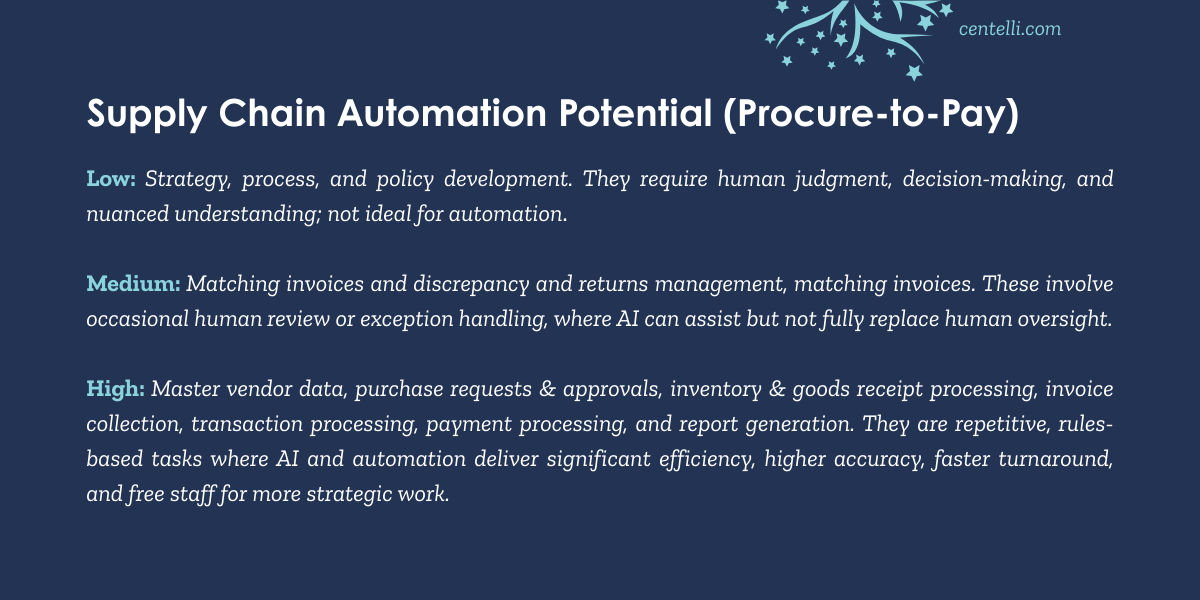
2. Purchase Order (PO) Creation
Automation helped overcome challenges of time-consuming manual POs that often led to delays, errors, and rework.
Post-automation impact:
- 100% accuracy
- On-time deliveries
- 2,500 person-days saved
- Happier clients
3. Harmonized Tax Schedule (HTS)
This use case gives a glimpse of how Agentic AI handles HTS code reporting for imports while also providing code justifications for faster resolution of wrong investigations. The tool stack includes CROSS customs rulings database query, as well as automation for ERP queries and web searches.
Significantly, the case study also underscores the importance of providing clear instructions for Agentic AI to work effectively.
AI and Automation in Healthcare
Manual processes, fragmented systems, and data silos continue to strain both patients and healthcare providers. Specifically, the back office can no longer be overlooked, as revenue cycle management has become a strategic differentiator for healthcare organization success.
Ways an AI-first approach and Agentic AI help elevate service delivery and patient experience:
- Automate EHR, PMS, billing, and call center operations
- Streamline data entry and redundant, error-prone workflows
- Improve end-to-end process visibility and cross-functional synchronization
- Enhance patient experience with real-time support, particularly on the administrative side of the patient financial journey
- Reduce the high administrative burden on staff, helping prevent burnout
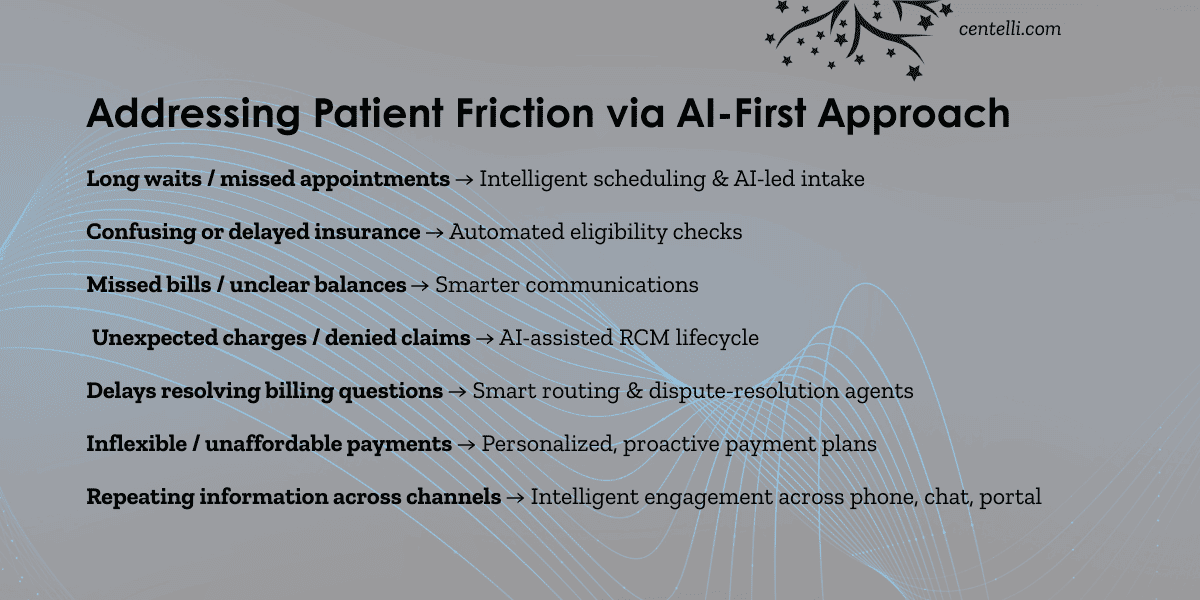
Next are some insights from the central “Conversational AI Predictive Model” case study that shows how AI processes patient interactions across multiple channels to generate actionable insights.
The scenario: A healthcare facility receives 3X more patient interactions per year across channels such as contact centers, websites, chats, emails, and Google reviews—alongside 2M patient visits annually.
AI Model Results:
- High-Risk Accounts: Identifies potential high-risk patients to prevent them from becoming contested accounts and reduce significant financial loss.
- Auto Agent Performance: Delivers 100% automated agent performance monitoring to boost contact center efficiency.
- Q&A Summarization: Summarizes patient interactions and provides Q&A insights to save time and increase productivity.
- Integrated Dashboards: Creates dashboards tailored to key organizational metrics for real-time visibility.
Ready to grow your business? Talk to our experts to discover how our custom AI and automation solutions can help. Book your free, no-obligation call today!




